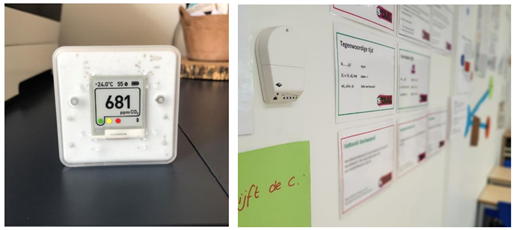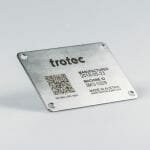COVID-19 has been an unpredictable black swan in 2020 and the second wave in Europe indicates that we might need to live with the pandemic for a long time. Although the development of a vaccine has had a landmark breakthrough, any vaccine will not be widespread quickly and there is still the opportunity for the virus to mutate and become seasonal. While widespread mass testing has been a central focus for governments for months, societies are now facing another question: how can the risk be assessed and how can the transmission of SARS-CoV-2 be prevented in the community.
Although the transmission routes for the SARS-CoV-2 are still debatable, there is increasing scientific evidence suggesting that long-range aerosol-based transmission might play an important role. How to assess and control the aerosol concentration are becoming the most critical measures for infection control. Due to the close link of the indoor CO2 concentration and aerosol density, using CO2 gas sensors to monitor the indoor environment can be an efficient method to control the COVID-19 outbreak. The German government is among the first to invest in this technology, installing CO2 gas sensors in schools. These sensors indicate when the air in the room is unhealthily stale.
The Federation of European Heating, Ventilation and Air Conditioning Associations (REHVA) has also published guidance for schools to install a CO2 monitoring system with traffic light indication.
While electrochemical gas sensors and metal oxide semiconductor gas sensors are cheaper and smaller, NDIR gas sensors are more reliable and sensitive for CO2 monitoring. The IDTechEx report “Environmental Gas Sensors 2020-2030”, benchmarks the performance, cost and manufacturing maturity for various gas sensing technologies. Infineon launched new CO2 environmental sensors based on photoacoustic technology. This new product is believed to perform at a similar level as NDIR gas sensors at a significantly lower cost. Director at Infineon, Mr Hicham Riffi, told IDTechEx that they have received a considerable demand for implementing traffic light CO2 sensors in schools and offices. Photoacoustic-based CO2 gas sensors are also provided by Sensirion. They are also aware of the increasing demand for such CO2 gas sensors for HVAC systems and indoor air quality applications.
This new trend will boost the potential market for CO2 gas sensors. IDTechEx predicts that over 50K gas sensors will be installed in Germany alone in 2021 and the demand for CO2 gas sensors globally will exceed 1 million units if other European countries and the new US government will decide to follow the same path.
For more information on this report, please visit www.IDTechEx.com/EGS or for the full portfolio of related research available from IDTechEx please visit www.IDTechEx.com/Research.
IDTechEx guides your strategic business decisions through its Research, Subscription and Consultancy products, helping you profit from emerging technologies. For more information, contact [email protected] or visit www.IDTechEx.com.





